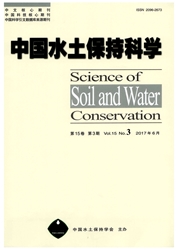

 中文摘要:
中文摘要:
为了解喀斯特地区景观变化过程及相应的生态效应,利用遥感影像数据对黔中地区1995-2000年的景观格局与动态进行分析。结果显示:研究区以灌木林地、坡耕地、中覆盖度荒草地占据着景观中的优势地位。旱地、林地和荒草坡的转换关系复杂,退耕还林还草与毁林毁草开荒同时并存,植被恢复与退化并存,整体景观尚处于一种波动状态,区域土地利用生态价值并未有明显提高,而呈下降趋势。研究区景观格局特征是岩性、地貌和人为活动共同作用的结果,景观斑块的转化主要受人文因素的影响,耕地的变化主要是被建设用地占用。在1995-2000年的土地利用变化中,研究区的生态既有恢复,又存在继续恶化的趋势。
 英文摘要:
英文摘要:
Based on 1995a and 2000a TM images, the landscape pattern and it's dynamic variation from 1995 to 2000 on the plateau-hilly region in middle of Guizhou were analyzed in order to understand the change processes of landscapes and corresponding ecological effects. The results indicate that shrub land, sloping farmland and mid-coverage barren grassland hold a dominant status. The transform relation among dry farmland, forest land and barren grassland is complicated also. "Removal lands from cultivation for afforestation and grassplanting" and "damage forest and grass lands and reclamation", and vegetation restoration and degradation all exist at the same time. The whole landscapes have been in a fluctuating state still. The relative ecological value of different land use types have been fallen from 1995 to 2000 in studied area. The characteristics of landscape pattern are the result influenced by lithology, physiognomy and artificial activities together, and controlled by human activities mainly, for example, the variation of cultivated land are due to the conversion into construct land in this area. The change processes of land use patterns may behave as ecological restoration and degradation in studied area from 1995 to 2000.
 同期刊论文项目
同期刊论文项目
 同项目期刊论文
同项目期刊论文
 期刊信息
期刊信息
